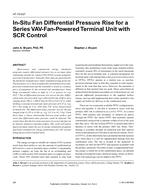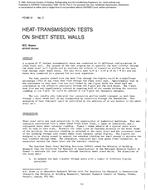This report describes the results of a study designed for indoor ice rinks. There are several thousand indoor ice rinks in North America. Even though these buildings have different sizes, they are characterized by the following common features: high energy consumption; large dimensions with few or no dividing walls; important refrigeration load; simultaneous need of heating (or air conditioning), refrigeration and ventilation; and, finally, considerable emissions of greenhouse gases (GHG) due to energy consumption and synthetic refrigerant losses.
The main objectives were to: (1) develop a two-dimensional transient numerical model capable of simulating ice sheet heat transfer with transient operating conditions, for several typical floors and cooling system designs; (2) incorporate into the model the ability to predict average daily ice sheet cooling loads; (3) conduct continuous, long-term measurements of appropriate parameters to verify and calibrate the numerical model on at least two differently arranged ice sheet cooling systems and (4) perform sensitivity analyses with the model to determine how the cooling load is affected by changes in design and operating characteristics including ice thickness, sub-floor insulation, ice surface temperature, ceiling emissivity, air motion, air temperature/enthalpy and coolant temperature.
Product Details
- Published:
- 2007
- Number of Pages:
- 133
- File Size:
- 1 file , 3.8 MB
- Product Code(s):
- D-RP-1289


